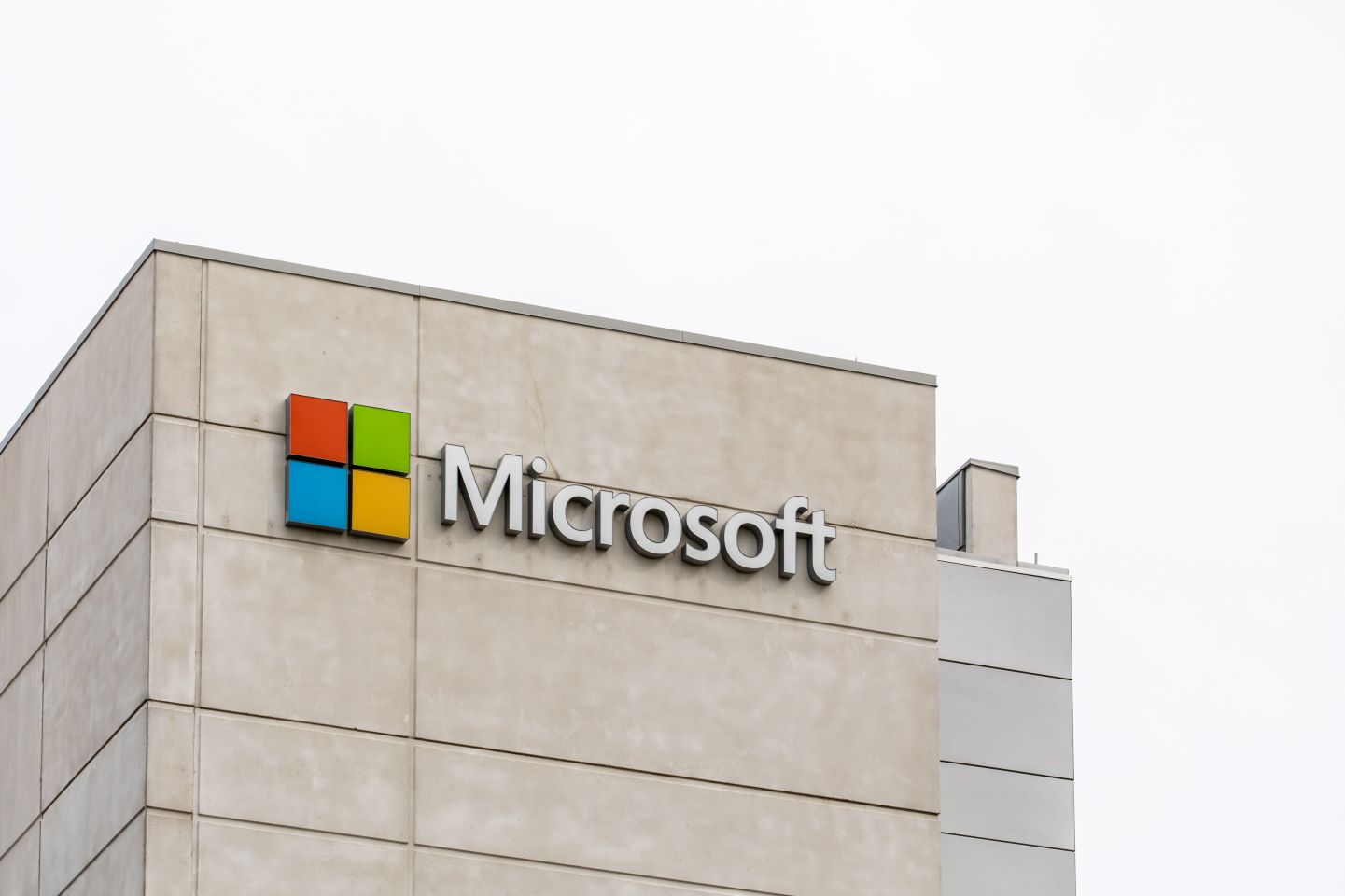Microsoft stock split: history, context and outlook
Microsoft’s share history includes several stock splits designed to make its stock more accessible to investors. Although the last split took place more than two decades ago, the subject continues to attract interest among traders and market observers.
Microsoft’s last stock split took place in 2003. Could another be on the horizon, or has the recent price pullback reduced the likelihood of a near-term split?
Past performance is not a reliable indicator of future results.
Microsoft’s 2025 performance
Microsoft (MSFT) delivered record results for fiscal year 2025, reporting revenue of $281.7bn, a 15% year-on-year increase, and operating profit of $128.5bn, up 17%. Net income rose 16% to $101.8bn, while annual earnings per share reached $13.64. Fiscal Q4 revenue came in at $71.2bn, also up 15% compared with the previous year. Past performance is not a reliable indicator of future results.
The company’s growth was driven by continued strength across its cloud, productivity, and artificial intelligence divisions, which offset weaker hardware demand. Microsoft remains among the world’s most profitable technology firms, supported by expanding margins and ongoing investment in cloud infrastructure, AI research, and enterprise solutions.
Shareholder returns and company actions
Microsoft has continued to return capital to shareholders. In Q4 fiscal 2025, it distributed $9.8bn through dividends and buybacks, up 15% year-on-year. The company also raised its quarterly dividend by 9.6% to $0.91 per share, giving a forward yield of around 0.71%.
There have been several insider sales during 2025, including by CEO Satya Nadella and President Brad Smith, reducing personal holdings but not denting institutional confidence. The next annual shareholders’ meeting is scheduled for 5 December 2025, where updates on capital allocation and share structure may be discussed.
Past performance is not a reliable indicator of future results,
Microsoft stock split history
Microsoft has a long record of stock splits dating back to its 1986 listing. The company has completed nine splits to date, the most recent on 18 February 2003, when shares split 2-for-1.
| Date | Split ratio | Description |
|---|---|---|
| 21 Sep 1987 | 2-for-1 | Microsoft’s first stock split following its 1986 IPO, expanding share availability for investors. |
| 16 Apr 1990 | 2-for-1 | Reflected the company’s early growth and rising investor interest. |
| 27 Jun 1991 | 1.5-for-1 | Increased the number of shares by 50% to support greater liquidity. |
| 15 Jun 1992 | 1.5-for-1 | Another 50% increase, continuing the company’s approach to keeping shares accessible. |
| 23 May 1994 | 2-for-1 | Occurred as Microsoft strengthened its position in the global software market. |
| 9 Dec 1996 | 2-for-1 | Implemented during a period of strong business growth and investor demand. |
| 23 Feb 1998 | 2-for-1 | Reflected sustained share price appreciation through the late 1990s. |
| 29 Mar 1999 | 2-for-1 | Took place near the height of the tech boom, doubling the number of outstanding shares. |
| 18 Feb 2003 | 2-for-1 | The most recent split, doubling shares in circulation and improving accessibility for retail investors. |
The cumulative effect of these actions means one share purchased before September 1987 would now represent 288 shares.
A stock split increases the number of shares in circulation while proportionally reducing the price per share. The move doesn’t affect overall market capitalisation but can enhance liquidity and make shares more accessible to retail investors.
MSFT stock split: is a 10th split likely?
Historically, Microsoft has initiated stock splits when its share price reached levels considered less accessible to individual investors. While speculation of a 2025 split increased during the earlier share price rally, recent volatility and a broader market pullback have eased expectations.
The absence of a formal announcement suggests a split is unlikely in the immediate future. At present, shareholder value continues to be supported by dividends, buybacks, and consistent earnings growth. With the share price stabilising after earlier highs, concerns around dilution appear to have diminished.
Final thoughts
Will Microsoft split its stock again soon? Based on current conditions and management priorities, a near-term split appears less likely. However, the company’s sound fundamentals and ongoing capital returns continue to underpin shareholder confidence.
Create an account Open a demo account
FAQ
When was the last time Microsoft stock split?
The most recent Microsoft stock split took place on 18 February 2003. It was a 2-for-1 split, meaning each existing share was divided into two. Following the split, Microsoft’s shares closed at around $24.96.
How many times has Microsoft stock split?
Microsoft has completed nine stock splits since going public in 1986. The cumulative effect of these actions means that one share purchased before September 1987 would now represent 288 shares.
Will Microsoft stock split again?
There is no official confirmation of a new Microsoft stock split. While speculation increased earlier in 2025 due to the company’s strong share performance, recent volatility and the absence of a board announcement suggest that a split is unlikely in the near term.
Can I trade Microsoft (MSFT) shares via CFDs?
Yes, it’s possible to trade Microsoft (MSFT) shares via contracts for difference (CFDs) on Capital.com. CFDs allow you to speculate on MSFT’s price movements without owning the underlying shares. You can go long if you expect the price to rise, or short if you think it may fall. CFD trading is leveraged, which means both potential profits and losses are amplified.